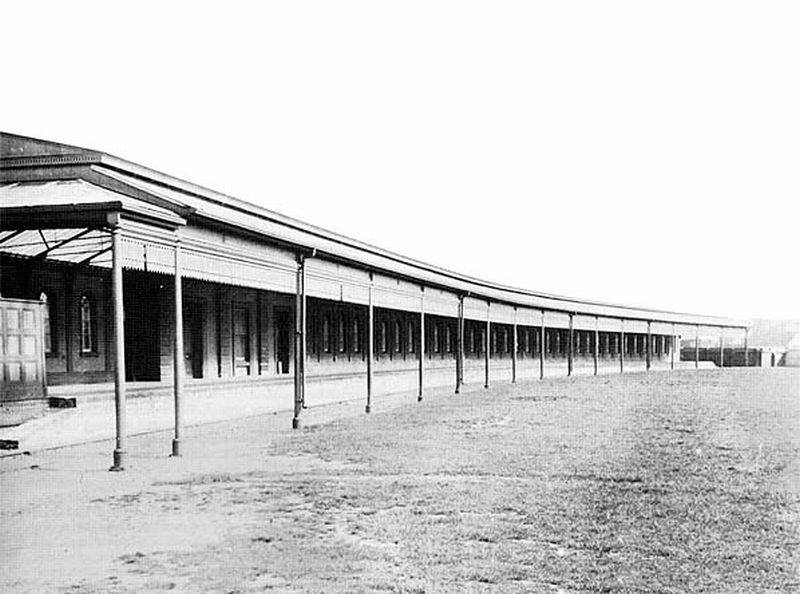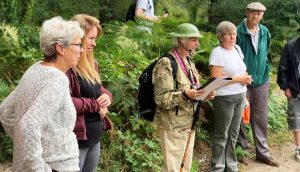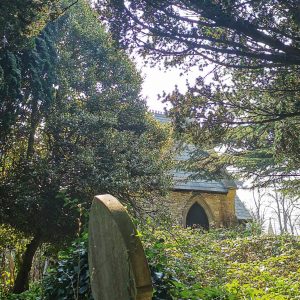Queen Victoria at Royal Clarence Yard
Did you know that Queen Victoria has a special link to Gosport and the forgotten railway in the town? To find out more read todays blog…
On Tuesday 22 January 1901, the death of Queen Victoria was announced when a notice was pinned to a small bulletin board on the gravel driveway of Osborne House on the Isle of Wight. It read, “Her Majesty the Queen breathed her last at 6.30pm, surrounded by her children and grand-children”.
In the following days chaotic planning ensued as the logistics of returning the body to London were worked out.
Following the death of Prince Albert in 1861 Queen Victoria always spent the Christmas period with her family at Osborne House, the holiday home Victoria and Albert bought in 1845 and which Albert redeveloped over several years. Victoria’s final Christmas was no different, writing in her diary on 18th December 1900 she explained the final journey she took to the seaside retreat,
“Had a very bad night, and scarcely slept at all. Breakfasted late and left for Osborne at 11.40… Slept for an hour on the train, and then I had a little broth, but I could not take much. Embarked on the Alberta at two. It was rather rough just outside Portsmouth, but became quite calm afterwards. Arrived up at the house about 3.30. Felt too tired to do anything, and dozed for a short while.”
The railway line that Victoria travelled on when journeying between London and Osborne was constructed in 1841, terminating in Gosport it served both the Harbour area and Naval Dockyard. The original terminus was in Spring Garden Lane located near the main gateway of the town. However, after the purchase of Osborne House by the Royal couple in the 1840s Prince Albert requested a station slightly closer to the harbour be built to make transport by water across to the island more convenient. This harbourside station required the ramparts of the town to be breeched which had previously been prohibited, but in 1845 the Garrison Commander agreed to the plans and a large private station known as the Royal Victoria Station was built within Royal Clarence Yard. While a comfortable waiting room was located beside the Royal Station, Victoria reportedly never used these facilities preferring for a carpet to be laid out next the railway carriage instead.
While Victoria made this trip down to Gosport several times a year, she was a notoriously timid railway passenger and believed the government should do more to ensure the safety of train passengers writing in a letter to William Gladstone in 1872
“In no country except ours are there so many dreadful accidents, and for the poor people who have to travel constantly by rail, and who cannot even have the comparative security which those who travel in first-class carriages can have, to be in perpetual danger, and are put to the most serious inconvenience by the in-exactitude of the trains.”
She also instructed that no royal trains travelled faster than 50-miles per hour and once travelling through Wigan was said to have sent her servant John Brown to tell the driver to slow down.
After the news broke publicly of Victoria’s death, plans began for her funeral and transportation back to London. The coffin was made by a local Isle of Wight carpenter and the Queen’s body was prepared by her dresser, who carried out the exacting instructions of Victoria.
On 1 February, Victoria crossed the Solent for the final time her coffin carried on the yacht Alberta, flanked all the way by battleships and cruisers. The boat stayed in harbour overnight and the following day the coffin was carried to the Royal Station where it was transported by railway all the way to London Victoria. The coffin was taken on a military procession through Hyde Park where thousands crowded to see their Queen. One final train journey transported the coffin to Windsor where her funeral was carried out and after lying in state for two days, she was buried in the Royal Mausoleum in Frogmore next to Prince Albert.
This was the last time the private station was used for passengers and a pavement plaque by the entrance of Royal Clarence Yard today recognises the role the station played in the event reading, “Queen Victoria’s funeral train passed here from Royal Clarence Yard, accompanied by the King, the Kaiser & numerous Royalty”.
Although parts of the railway line leading back to the also abandoned Gosport Railway Station are still visible from Weevil Lane, the station building itself is somewhat derelict having sat unused for the best part of a century. In recent years, the Royal Clarence Victualling Yard has undergone a regeneration programme with many of the old naval buildings being transformed into flats and business units. However, in 2020 the historic building came under threat when an application was put to the council revealing intentions to clear away several buildings in the yard including the Royal Station. After consulting the Gosport Society who considered the remaining railway and station to be an important part of Gosport’s heritage, Gosport Borough Council rejected plans for the removal of the building.




